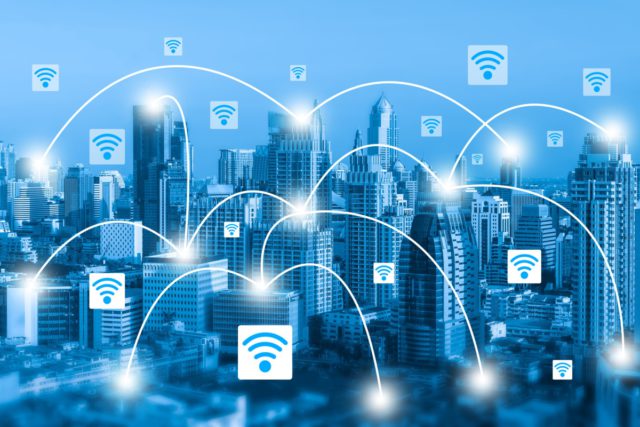Every organization should have a robust approach to managing emergency events such as flood. If, however, you cannot locate your organization’s incident response plan for flood, here are some actions to consider once you’ve received a flood response alert:
-
Assess your immediate situation: Assessing the physical threat of the flood should be your immediate starting place. Based on the information you have, understand if your site location will be inundated, isolated or likely to be without power or fresh water (common after-effects).
The safety of your people should be your primary concern, often followed by assets and operations. If the information is unclear, monitor local radio stations and Emergency Services (social feeds, television, internet or iluminr). Consider your triggers to evacuate the site.
-
 Activate a response team: Activating an incident response team to commence your response and eventually recovery, is critical in mitigating the impact of flood. Identify who can assist you in your immediate response, and clearly outline the tasks and responsibilities you require them to manage.
Activate a response team: Activating an incident response team to commence your response and eventually recovery, is critical in mitigating the impact of flood. Identify who can assist you in your immediate response, and clearly outline the tasks and responsibilities you require them to manage.Communicate with these team members, and set periodic times to check back in to inform of updated progress. Launching a virtual Emergency Operations center via online incident management platforms like CQ, can assist you centralize your intelligence and task lists.
-
Assess the impacts: Assessing the short to medium term impacts of flood, will assist you in planning out your response tasks. Undertaking an impact assessment with your incident response team can help bring together key considerations such as critical plant and equipment that may need to move to higher ground and critical functions that might be disrupted. Key categories that you might wish to assess impacts for are:
- Health and well-being:
- Are your people safe?
- What impacts will they experience in their personal circumstances (e.g. displacement)?
- Operational:
- What critical functions will be disrupted?
- What plant and equipment is critical and how will you get this to higher ground?
- What suppliers do you rely on that might be impacted?
- Do you have contingencies for loss of site, power, connectivity, supplier or equipment?
- Which staff will be required to maintain continuity of operations and can they carry out their tasks safely, from home or elsewhere?
- Can we secure back-up generators for continuity and recovery?
- Financial:
- What the financial impacts are – due to loss of site, supplier, customer at this time of year?
- What insurance coverage do you have for property and business interruption?
- Legal / regulatory:
- Are there hard copy files or inventory at risk that are required to be kept safe and secure?
- Will flood inundation cause an environmental impact?
- Will a cease of operations breach a specific law or regulation?
- What notifications need to be made to regulators or other government agencies?
- Reputation:
- Could a failure to continue or quickly recover a critical function cause a damage to your brand?
- Health and well-being:
-
 Communicate: Communicating with your stakeholder base is critical. To ensure you don’t miss these communications, a stakeholder map can assist by defining:
Communicate: Communicating with your stakeholder base is critical. To ensure you don’t miss these communications, a stakeholder map can assist by defining:-
Who do you need to communicate with? Consider staff, Emergency Management Services, group management or executive, customers, regulators and insurers.
If you’re part of a larger organization, escalating information to the appropriate management stakeholder is important to ensure you can access the resources required to manage ongoing impacts.
-
What do they need to know? Are you evacuating a site and/or closing it down for an anticipated amount of time? When will you provide updates? Where can stakeholders post questions?
-
How you will communicate? Different stakeholders will require different forms of communications. Using an emergency mass notifications software tool like CQ to send SMS may be perfect for your staff, whereas, information on your social feeds or website may better suit customers. Which key stakeholders require phone calls?
-
When that message needs to be delivered. Who do you need to prioritize given the situation. When will messaging take place? How often will you provide updates? Remember, in the vacuum of information, assumptions are made which can cause confusion and ultimately erode trust. It is important to provide regular updates, even if there is little to update.
-
-
Meet – do – meet: By periodically re-grouping to review all critical information and tasks to be done, your response team will move more effectively through your response to flood. Keeping a centralized event room open via CQ will allow your team to continuously re-assess the situation, check off critical tasks completed and act on information through a common operating picture. This will pay off as your team move from response to recovery after the immediate threat is over.
While floods can often be fast moving events, the ongoing impacts can last for weeks and in some situations, months. Districts can be cordoned off and in severe instances be placed under a state of emergency. Power can be cut off for extended periods of time and access to generators can be limited.
Recovery can be further hampered when large scale events place an unprecedented demand on recovery services such as insurance loss assessors, builders, and cleaners. Supply chains to supermarkets can be interrupted and your organization’s own staff may also be limited in their ability to support recovery as they may have been personally affected or displaced.
By taking quick action and activating a flood response team, your organization can move quickly to minimize the impact and secure valuable resources required to recover.
To enhance your incident response time to flood, you can actively monitor and receive flood alerts for your asset locations, free, via iluminr active threat monitoring.













